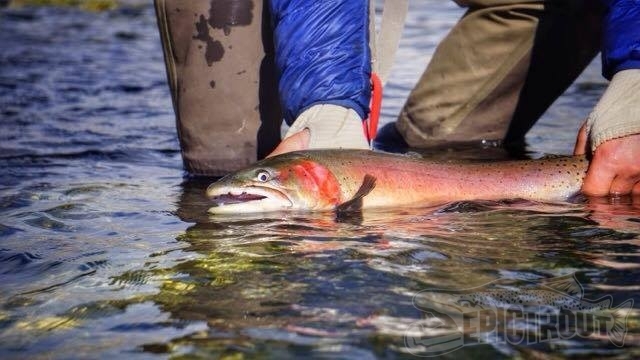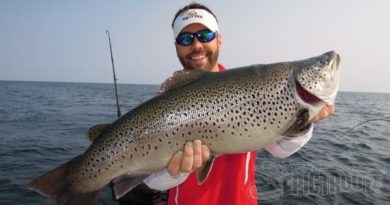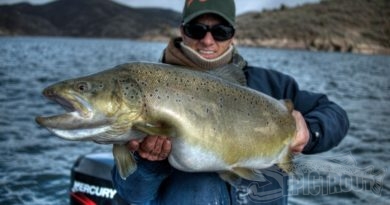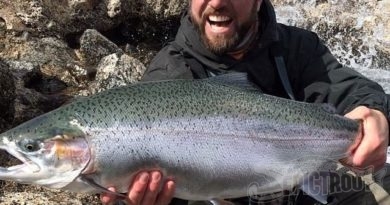Bobber Down
I have a great idea, before we dive into this article lets get one thing straight an indicator, indo, slip strike, sighter, float and so forth are all basically terms for a bobber, the bobber! Yup the same ones as probably most of us grew up with drowning worms a few feet below the surface suspending our presentation.
Most of you are probably seasoned skilled anglers with the likes of myself that are willing to put in the time really hunting for those trophy fish in your favorite river or lake. I know, we have all been home hours later then said time and dealt with the consequences of the warden (insert wife or girlfriend here)! Most of the time we come home with frigid fingers, dirty clothes and whiskers stained with the scent of whiskey and beer. We have put in countless hours carving baits, reading internet blogs, breaking down structure, water temps and really the science behind our target species so why in the heck am I writing an article about bobber fishing?

I will tell you exactly why! It is a wildly popular technique for steelhead and salmon fishing from pink worms to roe sacs and many people take some of the largest fish of the season using this type of method. That however is another article and conversation that can be carried on for hours. For the main focus of this article I really want to look at Stillwater indicator techniques primarily focusing on Pyramid Lake and the giant cutty’s that roam the ancient lake bottom.
How many of us have seen in person or without a doubt the pictures of ladder after ladder lined up at the hot beaches on the “Mid”? Sure on any day you will surely see some guys chucking streamers and imitations of all sorts on heavy full sinking lines fly lines and some of the newer integrated lines. While stripping wolly buggers, wolly worms, popcorn beetles and tui chub imitations can be a great rod bending technique it is also not the most user friendly. It definitely takes some time and serious casting of a fly rod to get comfortable with fishing heavy lines.
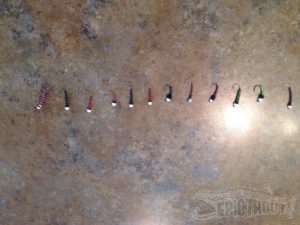
Around the early 2000’s some of the original Reno Fly Shop guys started playing with indicators and hanging a series of two flies below them with the point fly ideally inches off the bottom. What’s so great about this technique you ask? For one it is definitely a contributor to some of the largest fish that come out of the lake each year. You also can have never picked up a fly rod a be able to fish this method with the best of them. The most popular setup is 9 ft. 7 or 8wt. fly rod spooled with a floating line. For me personally and to keep it simple I like to run about a 10ft. liter comprised of 10lb. test fluorocarbon to the first fly and generally 8lb. test to the second fly. Sure you can line size up or down depending on conditions but on any given day this is how I start. Most of the fishing on the Pyramid beaches is done in less then 15ft. of water. My bottom fly (tiger midge has been extremely productive recently) should be somewhat close to the bottom to be most effective with the top fly anywhere from 18 to 30 inches above that fly. (The 49er which is a red and gold midge is also a great go to) Indicators come in a variety of styles from ones that slip on to the line and are pegged pick a tooth pick to screw top indicators. Try a few out to find your favorite. From about mid February on the Pyramid fish seem to be really keyed in to midge hatches and this is an extremely effective technique that can certainly produce more fish than any other technique.
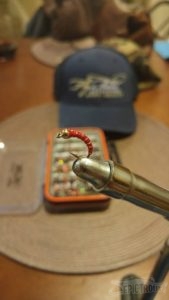
A few Mondays ago I had 4 fish over ten and one in the 15 lb. range and also saw 2 20lb. monsters and various other fish between 12 and 18 pounds all taken on midges. You can fish this technique effectively through most of the season. I have also noted that balance leeches seem to be more productive early season November through February and midges will take over primarily March through the close in June. This is an amazing technique for any skill level or age of the angler. I also
believe there are many days of the season when this technique well out fish any other method.
One of the first flies to be popularized was the Maholo nymph which is basically a pheasant tail tied with a holographic body. You definitely want this fly in your arsenal along with other midge style flies most commonly tied in 8’s, 10’s and `12’s.

Another wildly popular fly is the balance leech. Phil Rowley
originally tied this fly for some of the still waters in Canada. It had been a really undercover fly for many years but has also been widely popularized in the lastfew years. This should give you an idea of where to start and there are certainly many other variations of the method that will catch fish but this will get you onthe water and as I like to say roping em’!
Hope this can help put you on more trophy fish! One quick end note these
techniques will work in most stillwaters with a few variations. If you have
advanced questions feel free to send them to TightlinesZac@gmail.com
Or Instagram @541FlyFish
Tight lines,
Zac Sayed


